
Still haven’t started your business blogging efforts? No idea how or where to start? You’re in the right place.
Especially when you’re completely new to content marketing, it’s good to aim for frequent publishing as you want to fill up your blog with more than just a few pieces. This will increase your likelihood of getting found and make you seen as a valuable resource for your target audience as early as possible.
HubSpot’s State of Inbound reported that some of the top marketing priorities are traffic growth and higher conversions to customers at a lower cost:
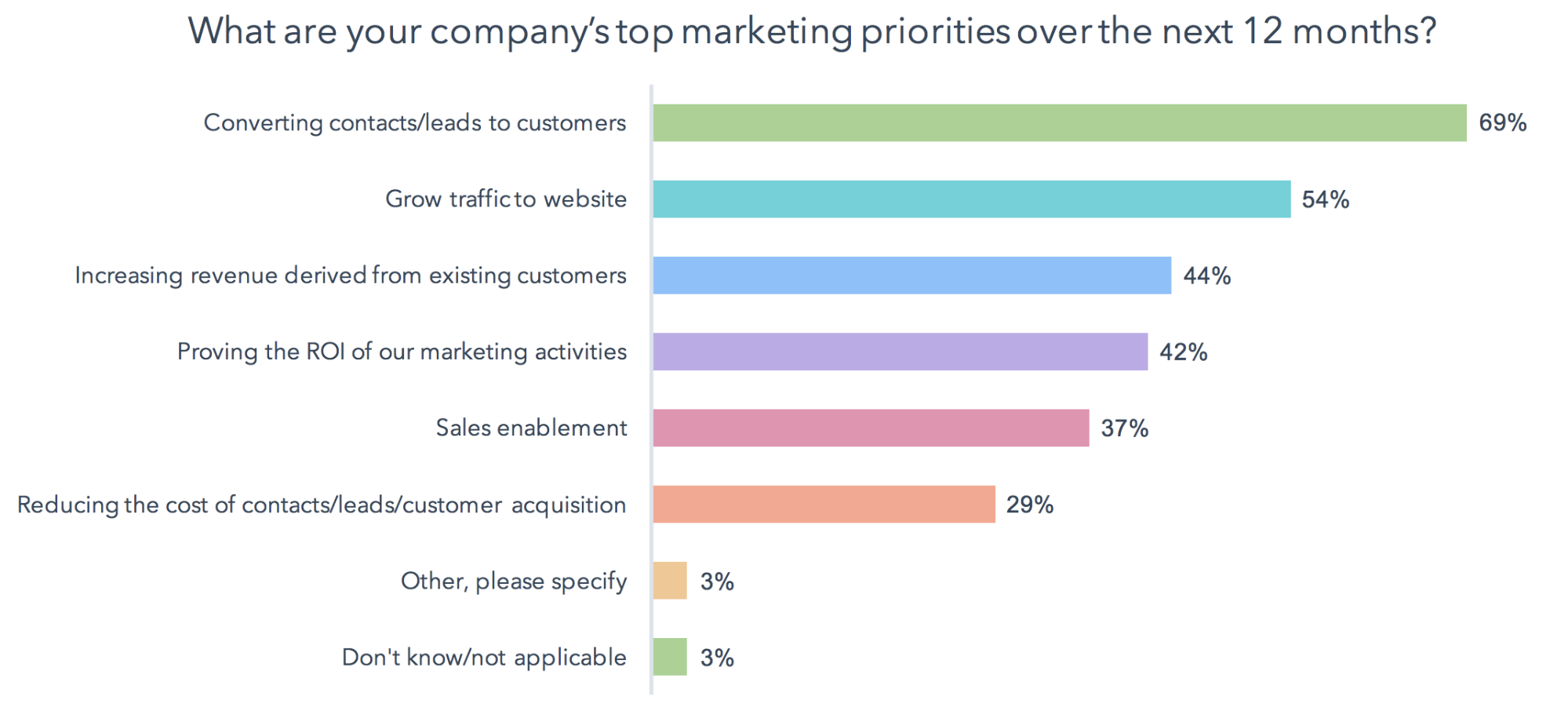
The problem lies in the time and effort it takes to reach these goals. In fact, an average blog post costs an average of $900 and takes 3 hours and 20 minutes to create. That is a lot of time and money!
You might think you’re too late to the game. Seeing that over 85% of the companies use content marketing in their organization, your competitors are likely there already.
Don’t panic: This guide will take you through the simple ways you can start creating irresistible content without spending a fortune or extra hours.
Why blogging is worth your investment
Here are just a few of the many benefits of having a high-quality blog for your business.
There’s (almost) no traffic without content marketing. When you don’t have a blog, your audience likely finds you through paid advertising and other sales-driven efforts. With content on your blog, they will find you while searching for answers to their questions and pain points, which will increase your brand awareness, showcase you as the relevant name in the industry, and help build a lasting relationship with your reader!
Here’s a great example to help you visualize the difference in traffic between a consistent blogging effort and no blogging at all:
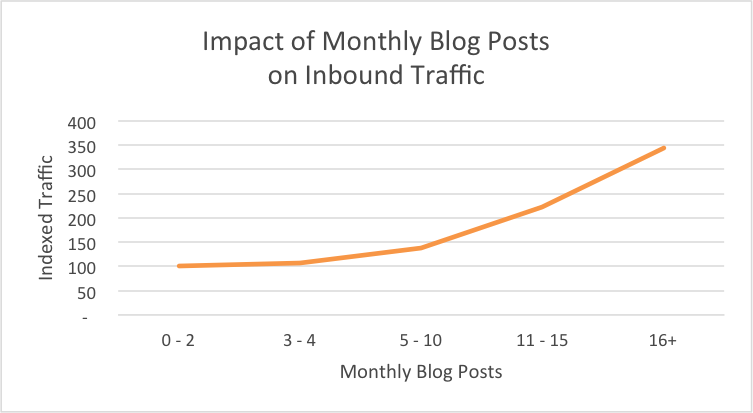
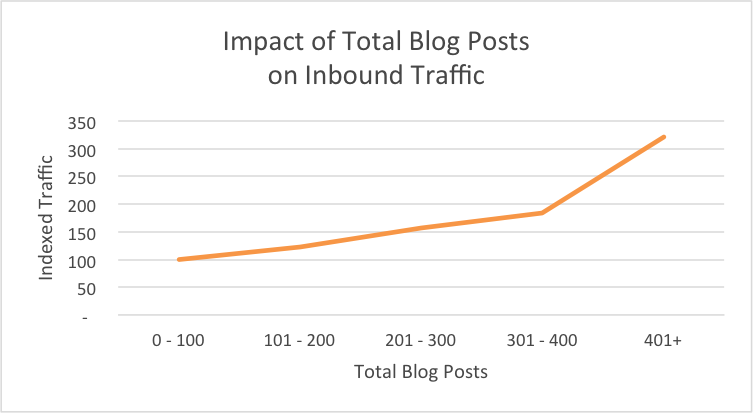
Content marketing generates more leads than outbound marketing, and costs less. The whole point of content marketing is being found in relevant moments rather than pushing a promotional message at random times. In fact, content marketing generates three times more leads and costs 62% less!
Smart blogging can bring compounding, long-term positive results. Blogging isn’t a strategy with an expiration date. When you create compounding blog posts—posts whose traffic grows over time—you reap the benefits for years to come. The alternative are decaying posts, which are usually too narrow or event-driven, so their value decreases over time, along with traffic.
Check out this example of compounding versus decaying topics from HubSpot:
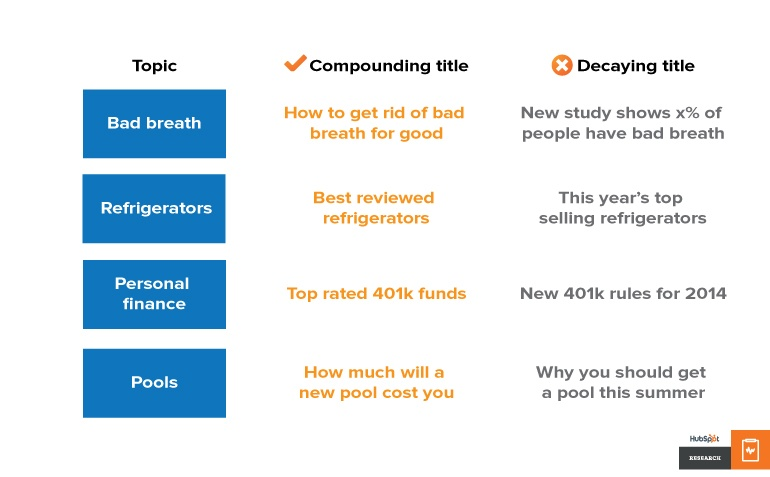
Create a rock-solid blogging strategy
Next, you’ll want to make sure you’re being strategic and create a well thought-out plan for your organization’s blog. This will help you be hyper-focused on creating only what you know your readers will genuinely benefit from.
1. Know your persona inside out
Your marketing persona is a detailed description of your ideal customer.
Hopefully, you already have a solid understanding of the people who buy from you, and especially frequent, returning customers. With the persona approach, you will get to know them even better by identifying the way they consume content.
You probably have more than one persona—most companies do as they sell more than one product and solve multiple needs. This is why it’s even more important to know your personas well—it will help you tailor every piece of content to its category and the audience it serves.
To define your persona(s), dig into your products and/or services and their categories. Then, identify who it is that purchases these solutions from you and the key pain point you’re solving for them. For example, you might provide pre-packed meals, but your customers may vary from busy moms to corporate offices.
Their pain points are different and they will impact your content, so be as specific as possible.
Other details you should add to your persona description are the topics they are interested in, the formats they prefer to consume (for example, short vs long-form blog posts), online platforms they frequently use, and the budget they are willing to spend on a solution.
Personas might be challenging when you’re just getting started, but remember: 71% of companies who exceed their revenue and lead goals have documented personas. It pays off!
2. List your topics and keywords
Next step involves brainstorming topics based on the insights from your persona definition.
Creating content only makes sense if it’s about issues your persona is experiencing and topics they want to read about. While you can probably already name some topics, it’s important not to assume everything, and back up your presumption with insights.
Here are some of the best and easiest ways to get ideas for your blog topics and keywords:
- Scan through frequently asked questions. You can do this by talking to your customer support team or by going through call transcripts or support email records. Take note of any patterns you see in questions and issues.
- Survey your customers. Even a short survey of a few questions can result in valuable, actionable insights. Make sure to ask your customers about the publications they read to get informed and the online platforms they use when researching related topics and problems.
- Use a keyword research tool. Finally, tools will help you nail down the popularity of search terms and various topics, as well as individual words that your customers use more often than others. For example, you might be using the words ‘weight loss nutrition plan’, which is searched 2,400 times a month, but you should be using ‘weight loss diet plan’ which is searched 135,000 times a month. Free tools like Google Keyword Planner and KeywordTool.io are easy to get started with.
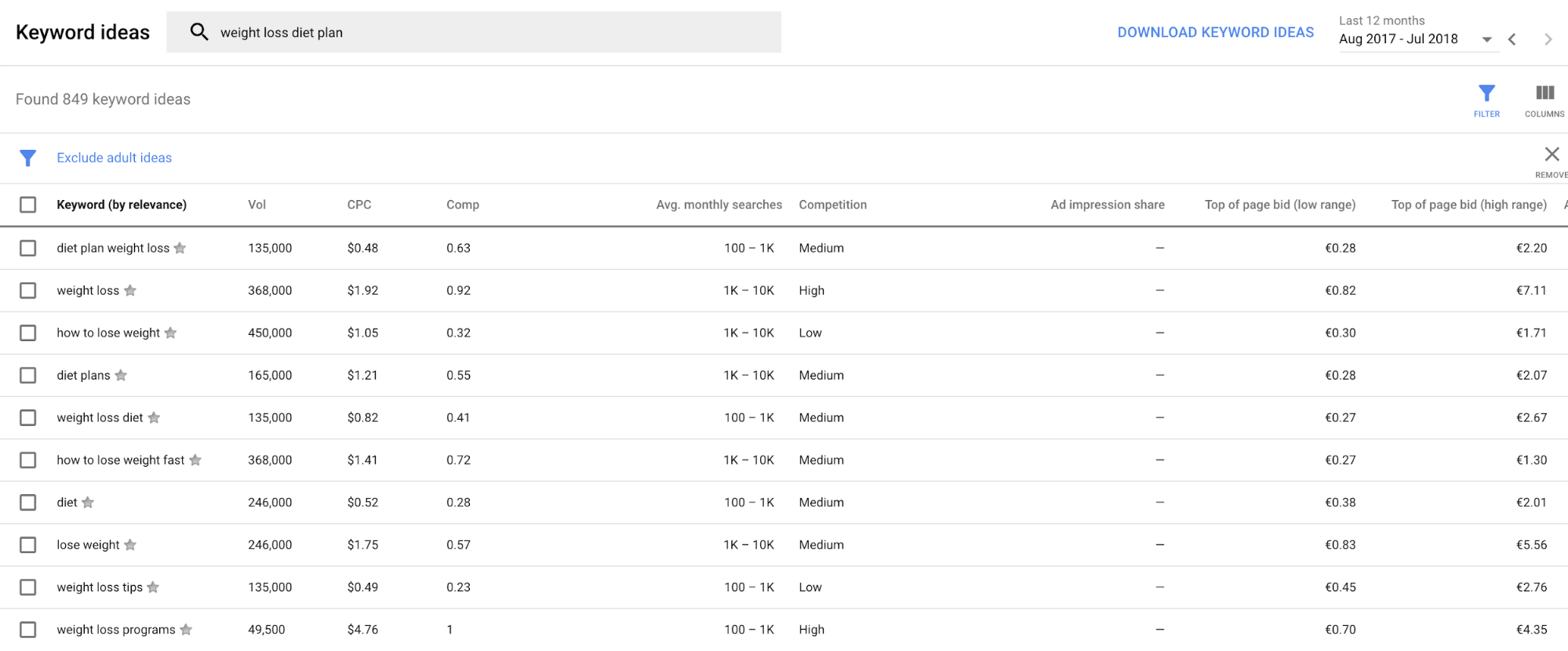
3. Create a plan and stick to it
Without a solid plan, content creation often takes the back seat when other areas of the business get busy. It’s no surprise—Content Marketing Institute reported that more than half of B2C organizations rely on small or one-person content marketing team.
This is why having an editorial calendar with a defined content creation and promotion process is crucial.
It will take you several attempts until you make the process the most efficient for you (and your team), so it’s important to openly communicate all expectations, deadlines, and collaboration. The best thing is to list all the tasks that need to get done for you to publish a blog post, which will help you organize your time and share tasks if you’re working with others.
You will come up with the task list that works best for you eventually, but here’s the one you can get started with:
- Topic selection and keyword research
- Drafting the blog post
- Writing the blog post
- Editing the blog post
- Image sourcing
- Publishing the blog post
- Blog post promotion
If you are working with other team members, make sure to add approvals into your process, too.
Content curation as a simple win
You might still struggle with some things around content marketing even after going through the steps above, such as:
- Not having enough time
- Lack of clarity on the depth of topics to cover
- Lack of credibility to start with
And that’s normal, even expected. It’s a challenge to get your content marketing off the ground and get everything right at first try, so you’re unsure about risking your time and resources.
Luckily, there’s a solution, and it’s the one we’ve seen success with for organizations of all types and sizes: content curation.
Content curation is the process of carefully sorting, selecting, enhancing and publishing content around a specific theme from other sources as opposed to your own.
You can curate content using several formats, including social content curation, curated blog posts, curated content hubs, and curated email newsletters. Each of these formats comes with unique benefits because portions of your audience are present on each of the channels and platforms involved.
Since we’re focusing on blogging, let’s go deeper into the idea of curated blog posts. Here are two reasons they’re important when you’re just getting started, and how you can make the most out of them:
Save yourself a lot of time
HubSpot’s blogging benchmark report uncovered the true impact of monthly blog posts on inbound traffic and how it differs based on the company size:
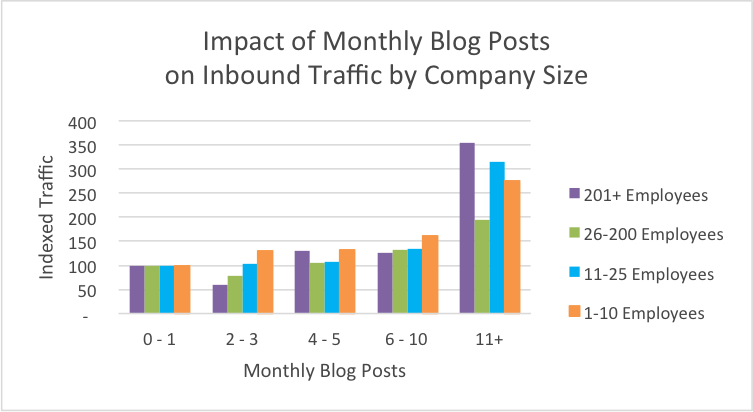
What stands out is the jump that happens when an organization starts publishing 11 or more blog posts a month, and even more so when you realize the impact it has on companies with 25 employees or less.
But when you remember the 3 hours and 20 minutes it takes to create a single blog post, you realize you’d need an extra week each month to write and publish that much content.
Because content curation relies on high-performing existing content and your added expertise—rather than creating from scratch—you can bring your blogging efforts down to 30 minutes instead of three hours.
A well thought-out curated blog post can bring an entirely new perspective into your reader’s world, educate them on a topic that matters to them, and save them time that they would otherwise spend searching for answers.
Get started by looking for inspiration inside and out of your industry and give yourself a deadline to create your first curated blog post. Here’s one of our curated posts on content strategy to inspire you.
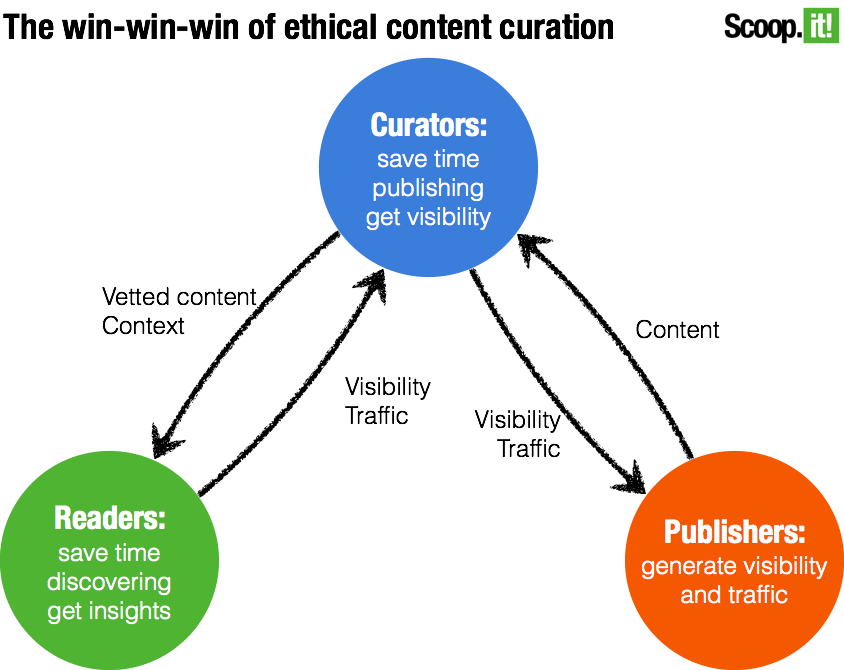
Build your authority and connections
The second of many benefits of curated blog posts is becoming recognized as the go-to resource on that topic.
Your reader then starts relying on you to bring them the best, most relevant and complete information from others with your thoughts and reasoning on it. By connecting them to other credible resources, you become one.
Another way curated blog posts help you build your authority is through relationships with influencers. By amplifying their content, you’ll get on their radar and often earn social shares from them, which will expose you to their audience. Over time, they will increasingly see you as a relevant and valuable resource in the industry, too.
Final tips to get you started
Over to you—you can now start creating blog content that will attract and delight your perfect reader. Here is some final advice to make your efforts as successful as possible:
- Set goals for your content. The only way you can measure and prove the return on investment in your content is by measuring everything you do and comparing it to your marketing and business goals.
- Have a thought-out process. Make sure you know what needs to be done to achieve your deadlines and make sure each task gets its place in your calendar with plenty of breathing room.
- Look for ways to save time. Content curation is the quickest win you can achieve. You can also save time by batching your tasks and delegating tasks like editing and design to other team members that might specialize in these areas.
If you’d like to dive deeper into ways you can start blogging consistently in 30 minutes a day or less, check out our eBook.
